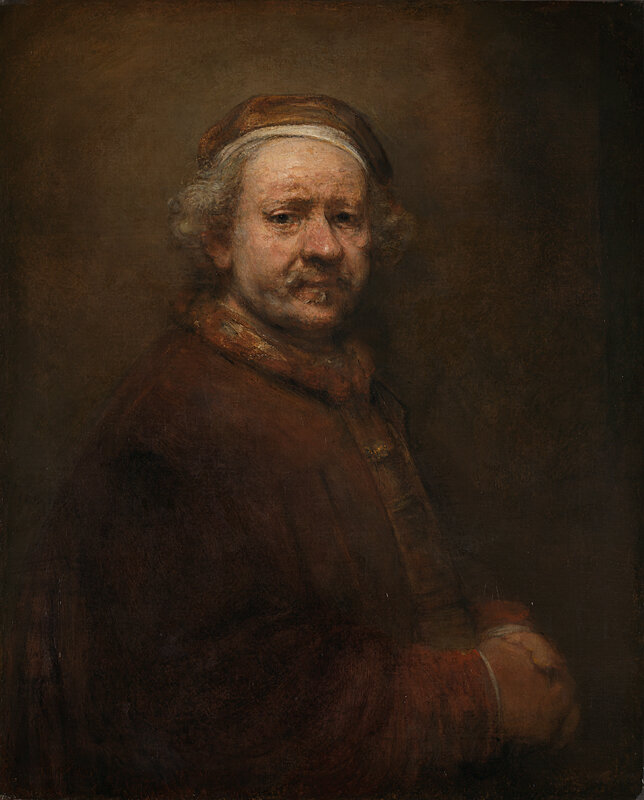Rembrandt + Rembrandt


A brazen, stylish rake leans out from the wall toward the center of the gallery, inching away from a weary elder flanking him. They are positioned side by side, suspended in pigmented oil and separated by wooden frames that mirror their outfits. After returning home from a brief interlude in Pasadena at the Norton Simon Museum, a painting of a 34-year old Rembrandt Harmensz van Rijn is reunited with his 63-year old neighbor at The National Gallery in London. They share room 22.
This tête-à-tête epitomizes the second half of Rembrandt’s biography—a Baroque drama with its origin rooted in the classics. In 1640, the artist’s career apexed. He received important commissions, purchased a sizable house on Sint-Anthonisbreestraat in Amsterdam, conducted a litany of studio disciples, and he and his wife Saskia were trying to build a family.
That same year, Rembrandt’s self portrait synthesized his success into a canvas dripping with assurance. He places himself among some of the greatest artists in the Western canon with a pose lifted from Durer, Raphael, and Titian: flexed arm, chin up, eyes locked on the viewer, torso draped in the fabrics of status. A jerkin with elaborate red brocade and ruched linen shirt breach Rembrandt’s velvety black tabard, topped with fur. Gold trims his hat and lacework circles his neck—his ambition is palpable.
Decades of personal hardship and diligent practice culminate in the artist’s self-portrait from 1669. The work, made the year he died, depicts someone who has retreated. His hands are clasped together at the waist, a muted doublet is buttoned up, a modest beret is pushed off his forehead to bathe a worn face in warm light. The mottled texture of aged flesh is honestly rendered. Sculptural surfaces developed by Rembrandt’s revisiting a series of somber expressions in caked paint.
The virtuosic technique and conceptual audacity of youth has been distilled to the essential elements. Gone is the staged persona and fastidious rendering. This matured artist reflects his mood and any self-confidence left is found in his brushwork. It is an admission. He wants others to see him as he sees himself—with no filter.
6/6/2019
